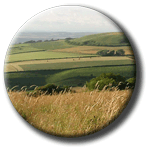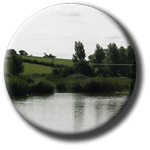National Parks
and similar designations in the UK
Nation al
Parks in the UK are areas which were mostly set aside in the 1950s and
1960s by the state because of their outstanding value in terms of natural
beauty, ecological, archaeological, geological and other features, and
recreational value. There are fifteen such parks in the UK, plus the
Norfolk and Suffolk Broads, which has equivalent status but
which the Government has not designated as a formal National Park.
National Parks in Scotland (and Northern Ireland, although none yet
exist in the province) are administered under slightly different legislation
to England and Wales, but for most purposes they can be considered equivalent.
al
Parks in the UK are areas which were mostly set aside in the 1950s and
1960s by the state because of their outstanding value in terms of natural
beauty, ecological, archaeological, geological and other features, and
recreational value. There are fifteen such parks in the UK, plus the
Norfolk and Suffolk Broads, which has equivalent status but
which the Government has not designated as a formal National Park.
National Parks in Scotland (and Northern Ireland, although none yet
exist in the province) are administered under slightly different legislation
to England and Wales, but for most purposes they can be considered equivalent.
There is a good map of these areas, and much information
about national parks in the UK on the National
Parks website.
National Parks are not publicly owned land but, like AONBs ,
are a designation which confers special protection upon land within it because
of its landscape quality. This means that resources are available to promote
and manage tourism within the area, special funds may be available to land
owners, and that certain restrictions apply on many types of development.
people live and work in national parks, there are towns and industrial areas.
In the UK, National Parks are not wildernesses. This makes them different
from national parks in most of the rest of the world.
,
are a designation which confers special protection upon land within it because
of its landscape quality. This means that resources are available to promote
and manage tourism within the area, special funds may be available to land
owners, and that certain restrictions apply on many types of development.
people live and work in national parks, there are towns and industrial areas.
In the UK, National Parks are not wildernesses. This makes them different
from national parks in most of the rest of the world.
Despite this, many National Parks do have large areas which
are accessible to the public, and National Parks sometimes negotiate such access
agreements with landowners. The National
Trust ,
a private charity, owns about 12% of the Peak District National Park, the oldest
National Park, and more than 25% of the Lake District, as well as many other
large areas of other Parks. Although the National Trust is independent of the
National Parks, most of the land it owns is open for public access.
,
a private charity, owns about 12% of the Peak District National Park, the oldest
National Park, and more than 25% of the Lake District, as well as many other
large areas of other Parks. Although the National Trust is independent of the
National Parks, most of the land it owns is open for public access.
National Parks are run by special bodies called National
Park Authorities. There is a list of these below, with contact details. These
are similar to local councils and have many of the powers that councils have
in other areas, particularly the power to control development. Funding
is complex but essentially the National Park Authorities are funded by central
government.
There are National Park Committees in each park who employ people
such as rangers and
wardens. In England and Wales they are responsible for conserving and enhancing
the natural beauty, wildlife and cultural heritage of the Park and improving
opportunities for public understanding and enjoyment of the Park. If there is
a conflict between these two purposes, greater weight is given to conservation
than recreation. 
Much of the work of National Park Authorities is by necessity
concerned with dealing with tourist pressure. Many areas of the National Parks
are under immense pressure from visitors. There is an ongoing debate about the
damage caused by the amount of human and vehicular traffic that such areas generate.
Apparently, by the number of times we get asked this one, this is a very popular
essay topic. So here's a link to some resources to help you find the answer:
Impacts Of Tourism
On The Environment .
.
National Parks in Scotland are slightly different from
those in England and Wales. The first was designated in 2002.
The National Parks (Scotland) Act 2000 sets out the four aims
of National Parks in Scotland. These are:
• To conserve and enhance the natural and cultural heritage;
• To promote the sustainable use of the natural resources of the area;
• To promote understanding and enjoyment (including enjoyment in the form
of recreation) of the special qualities of the area by the public; and
• To promote sustainable social and economic development of the communities
of the area.
The role of the National Park Authority is to ensure that these
aims are pursued collectively, and in ways which protect the natural and cultural
heritage of the area in the long-term. All of the aims have equal status, however,
if it appears that there is a conflict between the conservation and enhancement
of the natural and cultural heritage and other National Park aims, then the
Park Authority must give greater weight to this aim.
Although for many years no new parks were made, since
1997 there were political moves towards designating new national parks
in the UK and some have now been created. Loch
Lomond and the Trossachs National Park was the first of these, and was
designated in July 2002, followed by the Cairngorms
National Park in 2003. New Forest
National Park was designated in 2005, and the South Downs National Park was the most recent area to be deignated in 2010.
In October
2002 it was announced that the Mournes could become
Northern Ireland's first national park. We confidently predicted at the time that this
will take some time to become reality - and 22 years later it still hasn't happened; so don't hold your breath.
• Council for National
Parks
• Association of National Park
Authorities
• Wikipedia:
National Parks of England and Wales
• There is some good information from Natural
England about National Parks
Official websites are linked from the titles of the Park; other
sites below the contact details may be described as 'unofficial' - this simply
mean that they are not created by the relevant National Park Authority- it is
no reflection on their quality and in fact, they are sometimes a bit better
than the official ones. That's why we include them.
These bodies are not National Parks but in some cases may become
one in due course. They are all similar to National Parks in some ways, some
more so than others.

 al
Parks in the UK are areas which were mostly set aside in the 1950s and
1960s by the state because of their outstanding value in terms of natural
beauty, ecological, archaeological, geological and other features, and
recreational value. There are fifteen such parks in the UK, plus the
Norfolk and Suffolk Broads, which has equivalent status but
which the Government has not designated as a formal National Park.
National Parks in Scotland (and Northern Ireland, although none yet
exist in the province) are administered under slightly different legislation
to England and Wales, but for most purposes they can be considered equivalent.
al
Parks in the UK are areas which were mostly set aside in the 1950s and
1960s by the state because of their outstanding value in terms of natural
beauty, ecological, archaeological, geological and other features, and
recreational value. There are fifteen such parks in the UK, plus the
Norfolk and Suffolk Broads, which has equivalent status but
which the Government has not designated as a formal National Park.
National Parks in Scotland (and Northern Ireland, although none yet
exist in the province) are administered under slightly different legislation
to England and Wales, but for most purposes they can be considered equivalent. 







